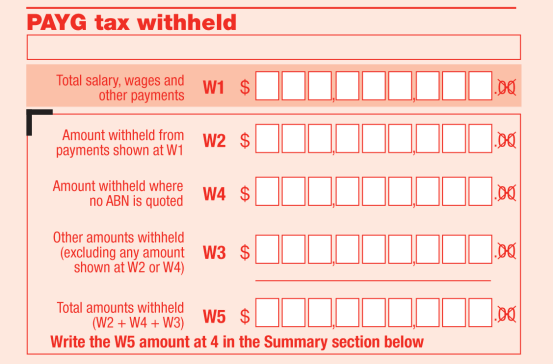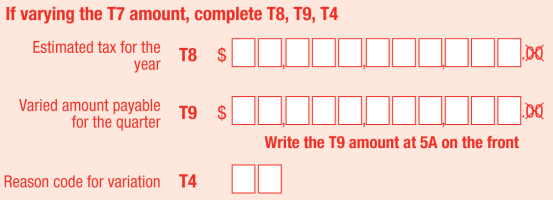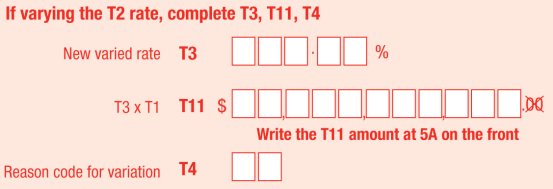Welcome to part 2 of my 3-part blog about Business Activity Statement (BAS) labels. In part 1, I covered the “G” labels which are all used to report Goods and Services activities for GST registered businesses. In today’s blog, I will look at pay as you go income tax instalment (PAYG ITI) labels and pay as you go withholding (PAYG WH) labels.
PAYG Withholding (PAYG WH)
If your business employs staff, it will probably be registered for PAYG Withholding. This means that you will be required to report gross wages and tax withheld to the Taxation Office (ATO). The section of the BAS where this information is reported looks like this:

Some businesses report PAYG WH quarterly and others report monthly.
The labels involved here are W1 to W5. Here is an explanation of what each label means:
W1 – Total salary, wages and other payments
At W1 you need to report all payments to staff even if tax was not withheld. This includes gross salary, wages and allowances paid to staff. Other payments to report may include leave loading, director fees, bonuses, commissions, payments made to a labour hire firm for those workers under a labour hire arrangement, employment termination payments, payments for unused annual or long service leave, payments to religious practitioners and Commonwealth education and training payments. You can also report superannuation income and superannuation lump sum payments here but it is important to note that these payments are not the same as superannuation guarantee contributions (SGC) paid on behalf of staff to super funds. SGC are not reported at W1 or anywhere else on the BAS.
W2 – Amounts withheld from payments at W1
At this label, report the total amount of tax you withheld from payments reported at W1. This figure can be obtained from your accounting software and/or payroll records.
W3 – Other amounts withheld (not including those shown at W2 and W4)
Here you need to report amounts withheld from these sorts of payments:
- payments made to staff who have not supplied a completed Tax File Number declaration or provided their Tax File Number
- interest or dividends paid to non-residents
- unit trust or other investment distributions made
- payments made to foreign residents for entertainment, construction and arranging casino gaming junket activities.
W4 – Amounts withheld where no ABN is quoted
If you purchase goods for your business and a supplier does not provide his Australian Business Number (ABN) on his invoice or in some other way, you must withhold 49% of the invoice amount. This amount is reported at W4. Note, this does not apply to amounts of $75 or less, exclusive of GST.
W5 – Total of W2, W4 and W3
Here you simply add the figures you input at W2, W4 and W3 and input the result at “4” on the BAS.
For more information about completing the “W” labels, go to this ATO webpage.
PAYG Income Tax Instalment (PAYG ITI)
At some point in your relationship with the ATO, you will find yourself having to pay PAYG Income Tax Instalments. This is a way of pre-paying amounts towards your annual income tax liability. These payments are calculated by the ATO from your most recent income tax return. The ATO offer 2 payment options including:
- Paying a quarterly instalment amount predetermined by the ATO or
- Paying an amount that you calculate by multiplying your actual business income by an ATO-provided percentage rate.
The BAS labels involved in this scenario are the “T” labels.
If you choose option 1, the amount will automatically appear at label T7 on the BAS.

You may decide to vary the instalment amount the ATO has given you. To do this, simply report your estimated income tax payable for the year at T8, divide this figure by 4 and input the result at T9.

If you vary your instalment amount, you will also have to explain to the ATO why you chose to do so. This is done by inputting a “reason code for variation” at T4. Reason codes include:
| Reason for Variation | Reason Code T4 |
| Change in investments | 21 |
| Current business structure not continuing | 22 |
| Significant change in trading conditions | 23 |
| Internal business restructure | 24 |
| Change in legislation or product mix | 25 |
| Financial market changes | 26 |
| Use of income tax losses | 27 |
| Consolidations | 33 |
Taxpayers who choose option 2, will be completing labels T1 to T4 and T11.
T1 – PAYG Instalment Income
Here you report all GST-exclusive income which you can find on your profit and loss report for the period concerned. Income can include things like your sales, royalties, fees, interest, rent received, net dividends, foreign income, fuel tax credits, trust and partnership distributions.
T2 – ATO instalment rate
This will be a percentage rate pre-printed on your BAS. To work out your PAYG ITI, simply multiply T1 by T2 and input the result at 5A on your BAS.

As with option number 1, you can choose to vary the rate the ATO has supplied to you. Do not do this yourself – I suggest that you discuss this with your accountant and be guided by his advice. The varied rate is input at T3. The new instalment amount is calculated by multiplying T3 with T1 and as per above, putting the result to 5A on the BAS. Once again, if a variation is made, a reason must be provided. Use the table provided above to find an appropriate code and input it at T4.

In summary, labels used to report PAYG WH are all of the “W” labels and those used to report PAYG ITI are the “T” labels. These labels come into play for business owners who are registered for PAYG WH and/or who are directed by the ATO to pay PAYG ITI’s.

Does overtime get reported in W1?
Thanks
Yes it does.